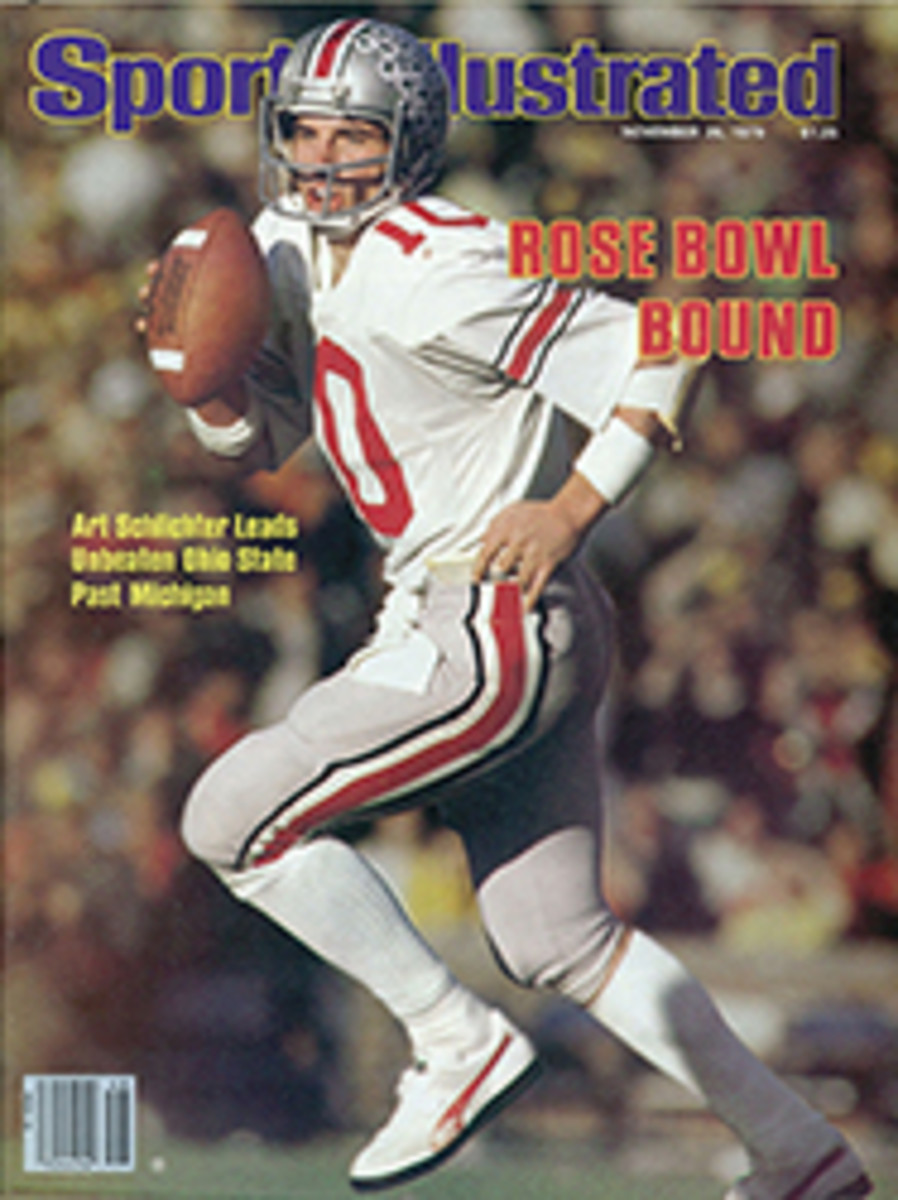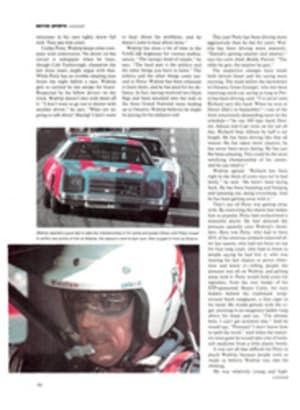
A HISTORY OF PRO FOOTBALL IN TWO BIOGRAPHIES—ONE SUNNY, ONE SOUR
Though George Halas and Paul Brown are indisputably the grand old men of professional football, at first glance that would seem to be all they have in common. Halas is Papa Bear, a shambling, disheveled fellow given to flamboyant outbursts of rage and delight. Brown is Mr. Cool: impeccably dressed, always under control, lapsing into expressiveness only with an occasional icy stare or thin smile.
But a reading of their autobiographies suggests that there is more common ground than is generally realized. The books are Halas by Halas (McGraw-Hill, $12.95), written by Halas with Gwen Morgan and Arthur Veysey, and PB: The Paul Brown Story (Atheneum, $12.95), by Brown with Jack Clarey. In telling their stories, the two men reveal that they have traveled many of the same paths.
Though Halas grew up in Chicago and Brown in small-town Ohio, both were raised on resolutely Middle American values: hard work, self-discipline and self-denial, loyalty—and a righteousness bordering on self-righteousness. Both were ardent athletes from childhood, both for many years were considered too small to compete at the varsity level, and both worked tenaciously to increase their size and weight.
Both ultimately became successful college players—Halas at Illinois, Brown at Miami of Ohio—and both knew by graduation that they wanted to devote their lives to football. In fact, both seemed to have only two consuming interests, football and their families; both married lively, vibrant women who willingly submerged themselves in their husbands' careers. And both men were pioneers. Not merely was Halas the father of professional football, but he was also an inventive technician whose most influential brainchild was the modern T formation with a man in motion. He was the most important figure in the establishment of the National Football League six decades ago, and it was his stubborn, dedicated leadership that helped keep the league afloat in its difficult early years.
Brown, on the other hand, probably can be called the father of modern professional football. He earned that distinction not so much for his tactical genius, though he had plenty of that, but for his creation of the Cleveland Browns of the old All-America Conference. It was a team so strong and successful that the NFL was forced to absorb it and two others from the ACC, thus opening the way for the era of growth and expansion.
There, however, the similarities pretty much end, and so do the similarities between the two books. Halas may well be a curmudgeon (my view is that he has earned the right to be one), but he is also an entertaining storyteller who can be quite appealingly modest about his formidable accomplishments; his book is unpretentious and enjoyable.
Brown, though, carries some rather large chips on his shoulders, and his memoir is surprisingly sour. He goes to unnecessary lengths to rebut all those stories about his alleged chilliness and even cruelty to players, but the chilly tone with which he states his case scarcely strengthens it. He also goes on and on about his mistreatment at the hands of team owner Art Modell, who fired him from the Browns after 17 remarkable years; here Brown has a very strong case, but his insistence on belaboring the issue quickly becomes tiresome.
By comparison, Halas is almost sunny. He recalls his brief fling as a switch-hitting outfielder for the Yankees; the fellow who replaced him was Babe Ruth. He writes with obvious delight about the early years of the Chicago Bears, when the team lived "hand to mouth" as it built itself into the legend that was the Monsters of the Midway. He pays a long-overdue tribute to the NFL's first commissioner, Joe F. Carr, a decent and farsighted man whose contributions have been almost totally forgotten. And Halas recalls a visit to the White House with Red Grange:
"Senator McKinley of Illinois sent his limousine to take Red and me to the White House to meet President Coolidge. The Senator introduced us, 'Mr. President, this is George Halas and Red Grange of the Chicago Bears.' President Coolidge replied, 'How are you, young gentlemen. I have always admired animal acts.' "
In addition to its good humor, Halas by Halas is notable (as PB is not) for its authors' refusal to indulge in interminable play-by-play recitations of ancient contests memorable only to those who played in them. His book is a history of professional football as seen through the eyes of its single most important 'participant, coach and owner, a history laced with salty opinion and plenty of behind-the-scenes information about how the pro game rose to its present eminence.
For both Halas and Brown, that eminence was not reached without cost. Both men speak harshly against the Players' Association—though they speak, of course, from the owners' vantage point. Both clearly regard the television revolution as a mixed blessing. Both say that the development of pro football into a big business, with all the complications and restrictions of big business, has taken most of the "fun" out of the game.
In the end, though, both are transparently pleased with their lives and proud of the many records they have compiled; they have every reason to be. If Halas' is by far the better book, both certainly are worth reading.

